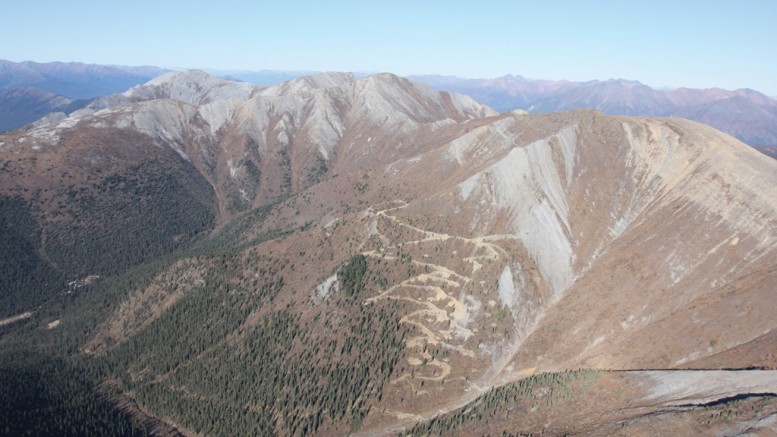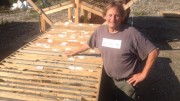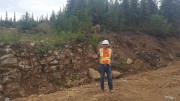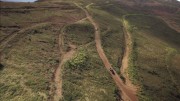DAWSON CITY, YUKON — Lining the quartz-gravel roads of Yukon’s Dawson City, the commercial hub of the legendary Klondike placer goldfields, are a number of derelict buildings that once gave refuge to the miners who risked it all in their pursuit for gold.
The hardships they endured are stark in comparison to the challenges explorers face today, as companies probe deeper into the crust with scientific precision, always at the mercy of distant commodity markets.
But at the core of every explorer is “unwavering tenacity,” Premier Darrell Pasloski said during a presentation at this year’s Yukon Mining Alliance investment conference in Dawson City, and mining has been “one of the Yukon’s greatest strengths for well over a century.

“You will see less and less conflict in the Yukon, even as the rest of the country faces more and more uncertainty.”
Darrell Pasloski
PREMIER, YUKON TERRITORY
“At the start of the gold rush in 1896, 10,000 people began the journey to reach Dawson’s gold-filled creeks, and those who stayed helped shape the Yukon as we know it today,” he said. “We are a territory that’s proud of our mining heritage, and we’re committed to creating a long-lasting future for this industry.”
The Yukon experienced its second gold rush in 2008, after Underworld Resources — since acquired by Kinross Gold (TSX: K; NYSE: KGC) — found the Golden Saddle gold deposit, 95 km south of Dawson City.
Golden Saddle was the first hard rock gold deposit found near the Klondike, other than the Lone Star mine, 20 km south of Dawson City, which produced a mere 1,240 oz. gold between 1912 and 1914.
In comparison, the Klondike produced over 20 million oz. of placer gold over its history, and that number continues to grow. Between May and December last year, miners sluiced out 60,000 oz. gold for a value of $70.3 million.
“The past century remains a cornerstone in the Yukon’s economy and culture … the Klondike is where it all started for explorers,” Pasloski said.
Finding the bedrock source of the placer gold has always been the Excalibur for any explorer in the Yukon. So when Golden Saddle was discovered, over a hundred junior mining companies and countless prospectors flocked into the region.
Soaring gold prices also helped exploration, and expenses peaked at $300 million in 2011, while 110,000 claims were staked the same year.
Kinross bought Underworld for $139.2 million in 2010, but the project — which hosts 9.8 million inferred tonnes of 2.67 grams gold, totalling 840,000 oz. gold — was subsequently shelved.
Fortunately, the kick in exploration spurred the discovery of other orogenic gold systems, most notably Kaminak Gold’s Coffee gold deposit, 30 km south of Golden Saddle.
The half-oxidized deposit hosts 63.7 million indicated tonnes of 1.45 grams gold for 3 million oz., plus 52.4 million inferred tonnes of 1.31 grams gold for 2.2 million oz. gold. Goldcorp (TSX: G; NYSE: GG) bought the junior explorer and its project for $520 million in July this year.
“Mining and exploration isn’t easy, it really requires perseverance and investment to succeed,” Pasloski said. “Goldcorp made a significant investment, and the project is expected to generate $2 billion in revenues and employ 500 people in its first decade. So on behalf of all Yukoners, I want to say congratulations to every person who brought that project forward.”
The latest downturn in commodity markets may have deflated exploration spending down to $65 million last year, compared to $80 million in 2014, but ongoing work by the Yukon Geological Survey (YGS) and the Mineral Deposit Research Unit (MDRU) based at the University of British Columbia is gaining momentum.
Geochronological dating by MDRU has found that mineralization at Golden Saddle and Coffee occurred 100 million years apart, each driven by separate mountain-building events. The placer gold in the Klondike may be akin to mineralization at Golden Saddle, whereas regional, east-trending structures are thought to be the main conduits of gold at Coffee.
And their work isn’t restricted to hard rock deposits. Last year, the YGS investigated the White Channel gravel — the host of placer gold in the Klondike — and discovered an older pay unit called the Paradise gravel, which appears to be the main gold source on benches in the area.
“We have brilliant minds at the YGS, and many technical experts on staff to help companies move their projects forward,” Pasloski said.
There is only one mine active in the territory: Capstone Mining’s (TSX: CS) Minto copper-gold-silver mine, 240 km north of Whitehorse. The open-pit and underground porphyry deposit produced 6,093 tonnes of copper in concentrate in the second quarter of this year, at US$1.70 per lb. copper.
The silver-rich, polymetallic Wolverine mine — owned by private company Yukon Zinc and located 440 km northeast of Whitehorse — was closed in January last year, and Alexco Resource (TSX: AXR; NYSE-MKT: AXU) suspended operations at its Bellekeno silver mine, 330 km north of Whitehorse, in September 2013.
“The softening in global commodity prices has impacted our economic sector, with local mine closures and lower exploration spending,” Pasloski said. “But we’ve weathered these challenges, and the potential of our region remains incredibly strong … I know that now, more than ever, is the right time to invest in our projects.”
The next generation of mines could include Selwyn-Chihong Mining’s Selwyn zinc-lead project, 280 km north of Watson Lake, and Victoria Gold’s (TSXV: VIT) fully permitted Eagle gold project, 85 km north of Mayo. Western Copper and Gold (TSX: WRN; NYSE-MKT: WRN) is nearing the end of its assessment at its Casino copper-gold project — the largest submission ever received by the Yukon Environmental and Socio-economic Assessment Board.
Last year, over 60% of the $65 million spent in exploration focused on gold plays in the region. Advanced gold projects include Rockhaven Resources’ (TSXV: RK) Klaza, and Atac Resources’ (TSXV: ATC; US-OTC: ATADF) Rackla. A few other gold explorers with greenfield drill programs this year include Klondike Gold (TSXV: KG), Independence Gold (TSXV: IGO), Strategic Metals (TSXV: SMD).
Elsewhere in the precious metals space, Wellgreen Platinum (TSX: WG; US-OTC: WGPLF) has a platinum group metals and nickel deposit in southern Yukon.

A drill site at Rockhaven Resources’ Klaza gold-silver-lead-zinc project in the Yukon, 50 km west of Carmacks. Credit: Rockhaven Resources.
“With our wealth in natural resources, the Yukon is well-positioned to turn the corner … and we’re focused on putting the tools in place to make the Yukon the next big development play for decades to come,” Pasloski said.
He acknowledged that access to land and electricity are concerns for explorers in the region, and priorities for his government.
The Yukon’s Minister of Energy, Mines and Resources Scott Kent told The Northern Miner during a phone interview that the territory is asking the Canadian government for $500 million towards more transportation infrastructure, outside the average $60 million spent per year.
This would include building roads south of Dawson City, which would benefit Goldcorp’s Coffee project and Capstone’s Minto mine. Another road network is proposed north of Carmacks, near Western Copper’s Casino deposit. In the Yukon’s southeast, the government is looking to upgrade roads to Selwyn-Chihong Mining’s Selwyn project.
“Not only is there a good business case to be made for the return on investment from Canada, it’s a good business opportunity for the local communities,” Kent said. “The investment would also derisk the projects and make them more viable for potential investors to bring development and production to the area.”
Kent anticipates that by year-end the government will have a better idea of which road projects will go forward, pending budget agreements with affected First Nations.
Premier Pasloski comments that the Yukon is different from other jurisdictions in Canada because of its “sophisticated First Nation governments.”
“In other jurisdictions you hear about blockades and occasional violence, in the Yukon you hear about negotiations, strongly worded letters and on rare occasions, it goes to court,” Pasloski said. “Compared to other jurisdictions, that’s a pretty mature relationship. And as time goes on I believe you will see less and less conflict, even as the rest of the country is facing more and more uncertainty.”






Be the first to comment on "Yukon Premier supports mines"